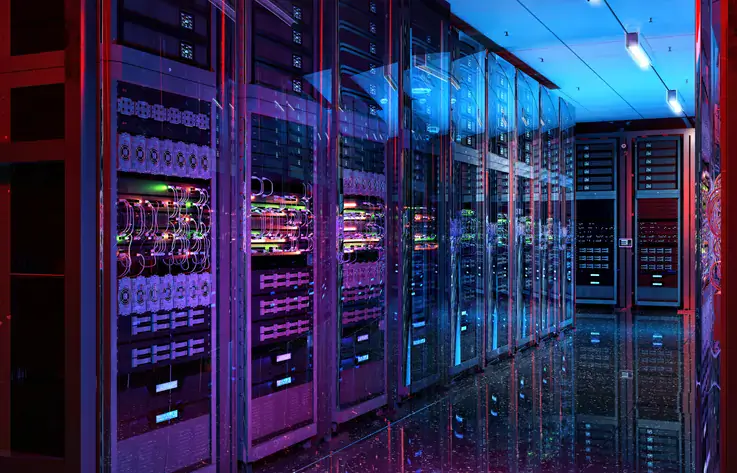
The data center construction industry in the U.S. is navigating a rapidly changing landscape shaped by technological growth, global uncertainty, and shifting regulations. As companies continue to expand their digital footprints, the demand for robust, scalable infrastructure has never been higher. Yet, building these large-scale facilities is far from straightforward.
According to BluePrint Supply Chain, developers are grappling with supply chain disruptions, rising costs, labor shortages, and complex zoning laws, all while trying to meet tight deadlines. Energy access and sustainability targets further complicate site selection and planning. These multifaceted challenges call for adaptive strategies, long-term forecasting, and a deeper collaboration between stakeholders to ensure projects can progress efficiently.
Demand and Market Pressure
The rapid growth of cloud computing, artificial intelligence, and digital services is fueling a surge in data center construction across the United States. Companies in sectors like finance, healthcare, and e-commerce are scaling up their digital infrastructure, creating a sustained need for new facilities that can handle rising data volumes.
As demand intensifies, developers face mounting pressure to deliver projects quickly, especially in regions with concentrated user bases. This urgency often clashes with the time-consuming realities of construction planning, site acquisition, and permitting, slowing down the pace of expansion. High-demand urban areas are particularly challenging due to limited space and heightened competition for resources. In some metro zones, developers must also contend with aging infrastructure and community resistance to new industrial growth
Supply Chain and Material Delays
Global disruptions have strained the availability of essential components needed for data center builds. Long lead times on generators, cooling units, and specialized electrical equipment have forced many projects into extended timelines, making it harder to meet aggressive deployment schedules. These bottlenecks are often unpredictable, with shipment delays stemming from port congestion, geopolitical tensions, or raw material shortages.
Even when materials are available, fluctuating prices and inconsistent delivery windows complicate procurement strategies. Construction teams are often left juggling schedules, adjusting workflows, or even pausing certain phases of development until key supplies arrive. On top of that, sourcing from alternate vendors doesn't always guarantee quality or compatibility, adding another layer of coordination to an already complex process.
Labor and Workforce Limitations
A persistent shortage of skilled labor is one of the most pressing challenges in data center construction. The industry requires a mix of specialized trades — electricians, HVAC technicians, and low-voltage installers — whose expertise is not easily replaced. As demand grows, qualified workers are being stretched thin across multiple projects nationwide.
In some regions, the labor gap is even more severe, with training programs and apprenticeships unable to keep pace with market needs. This talent shortfall leads to slower builds, higher labor costs, and increased reliance on subcontractors, which can introduce quality and consistency risks. Some firms are turning to prefabrication techniques to reduce on-site labor requirements, but this comes with its own logistical hurdles.
Energy and Infrastructure Constraints
Accessing reliable power is becoming a major hurdle as data centers consume vast amounts of electricity to support servers and cooling systems. In some areas, the grid simply isn’t equipped to handle the load, causing delays while developers wait for utility upgrades or new substations. The pursuit of sustainable energy only adds complexity, as organizations seek to balance operational demands with environmental goals.
In markets where land is available but infrastructure is lacking, developers often face the added burden of building out connectivity and utility access before construction can even begin. These unseen investments can stall projects before the first shovel hits the ground. Some are exploring private energy partnerships or microgrid solutions to bypass traditional limitations and accelerate timelines.
Regulatory, Zoning, and Land Use Barriers
Navigating local approval processes can be frustratingly slow. Municipalities often impose strict zoning rules that limit where and how data centers can be built. In fast-growing regions, community pushback around noise, energy use, or land development can lead to lengthy public hearings and unexpected restrictions.
Even when a site checks all the boxes, overlapping regulations across local, state, and federal agencies can complicate progress. Developers must engage legal and environmental experts early on to avoid costly delays down the line. Permitting timelines can vary widely depending on jurisdiction, making it difficult to predict when construction can actually begin.
Rising Costs and Risk Management
Construction costs have climbed sharply, driven by inflation, higher wages, and material expenses. Budgeting has become more difficult, especially for multi-year projects where pricing can shift dramatically over time. Developers must now factor in greater financial uncertainty and adapt their strategies to absorb sudden changes.
Security during the construction phase has also grown in importance. With valuable equipment and sensitive infrastructure on-site, theft and vandalism pose real threats. Insurance requirements have tightened, and risk mitigation planning is now a critical part of the pre-construction phase. Some sites are even investing in remote surveillance and on-site security personnel to safeguard critical assets throughout the build.


